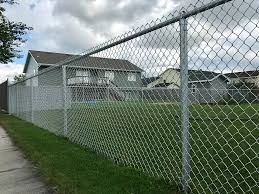The Versatility and Benefits of Gabion Boxes
Gabion boxes, also known as gabion baskets, are versatile structures made from wire mesh filled with rocks or other materials. Originally developed for erosion control and flood management, these robust constructions have found applications in landscaping, aesthetics, and civil engineering. This article explores the diverse uses and benefits of gabion boxes, highlighting their importance in contemporary construction and environmental management.
Historical Context
Gabions trace their roots back to ancient military engineering. Soldiers used them to create protective barriers against enemy forces by filling metal cages with stones or other heavy materials. Over time, this concept evolved into modern applications, primarily in civil engineering and environmental protection. Today, gabion boxes serve not only as functional structures but also as aesthetically pleasing elements in various projects.
Construction and Design
Gabion boxes are typically constructed from double-twisted hexagonal wire mesh, which is both durable and flexible. They can be made in various sizes, allowing adaptability to suit different project requirements. The wire mesh serves as a container that can be filled with local stone, recycled concrete, or other materials, making gabion boxes a cost-effective solution as they do not require the expensive, heavy materials used in traditional construction.
The design of gabion boxes allows for their use in numerous applications. They can be stacked to create walls, fences, and retaining structures, or even used as standalone installations in landscaping projects. The fill material can vary depending on the project, enabling designs that cater to both functional and aesthetic needs.
Erosion Control and Flood Management
One of the primary benefits of gabion boxes is their role in controlling erosion and managing floods. By acting as a barrier, they slow down water flow and absorb energy from moving water, reducing the potential for soil erosion. Placing gabion boxes along riverbanks, steep slopes, or coastal areas helps to stabilize the ground and protect infrastructure.
gabion box

In flood-prone areas, gabion boxes can be strategically placed to create levees or temporary flood barriers. Their ability to withstand the force of rushing water makes them ideal for this purpose. Additionally, the porous nature of gabion structures allows water to flow through them, which helps to reduce hydrostatic pressure and further minimize erosion.
Aesthetic Applications
Gabion boxes have also gained popularity in the world of landscaping due to their aesthetic appeal. They can be used to create beautiful garden walls, seating areas, and decorative features. The natural stone fill provides a rustic look that blends seamlessly with outdoor environments, while also being environmentally friendly.
Landscapers appreciate the versatility of gabion boxes, as they can be incorporated into various design themes, from contemporary to naturalistic. Whether used in urban parks, backyard gardens, or public spaces, gabion structures can enhance the visual interest of an area while serving practical purposes.
Sustainability and Environmental Benefits
A significant advantage of gabion boxes is their low environmental impact. By using locally sourced materials and recycling concrete, construction projects can reduce their carbon footprint. Moreover, the longevity of gabion structures means less frequent maintenance and replacement, contributing to sustainability in civil engineering.
Gabion boxes also promote biodiversity. When filled with vegetation or weaved with plants, they can serve as habitats for wildlife, helping to restore ecological balance in disturbed areas. This aligns with modern environmental practices that advocate for integrating nature into urban development.
Conclusion
Gabion boxes are exemplary structures that combine functionality, aesthetics, and environmental sustainability. Their versatility allows for countless applications, from erosion control and flood management to creative landscaping solutions. With their historical significance and contemporary relevance, gabion boxes represent a thoughtful approach to modern engineering challenges, ensuring safe and sustainable environments for future generations. As more architects and engineers embrace the use of gabion boxes, we can expect to see innovative designs and applications that continue to push the boundaries of what these robust structures can achieve.
















